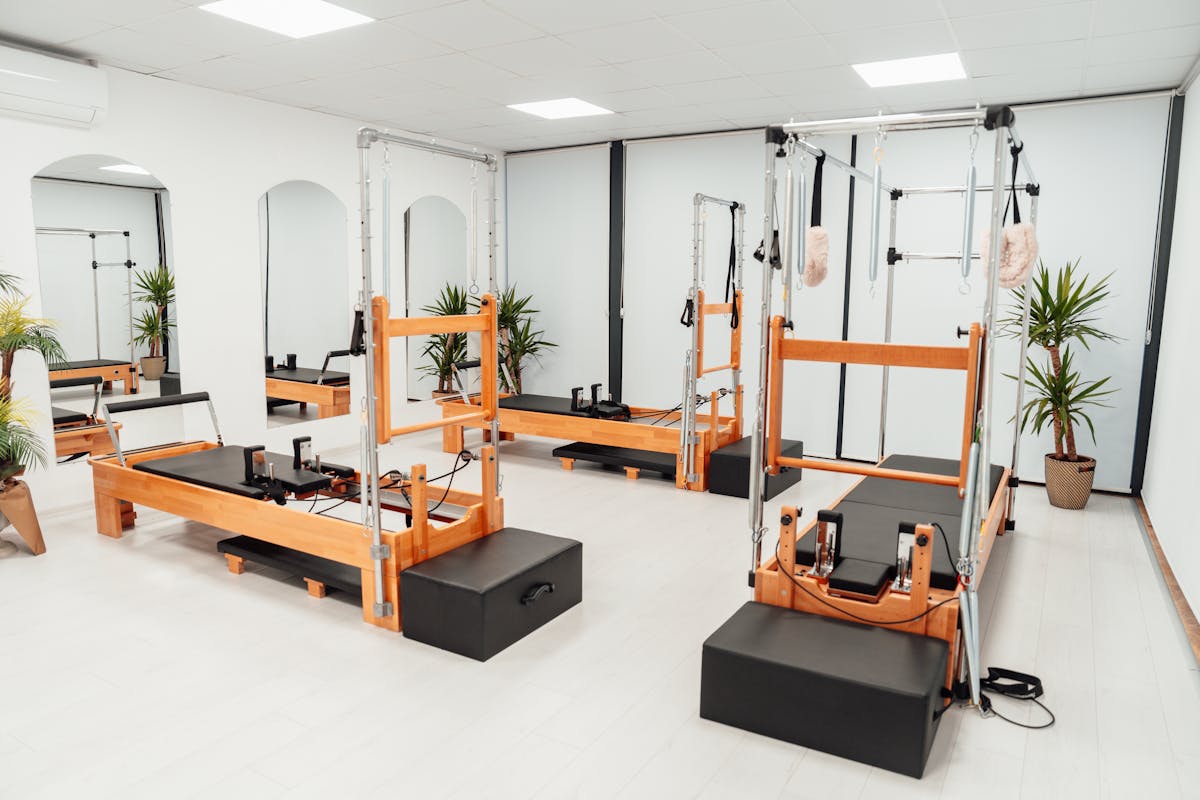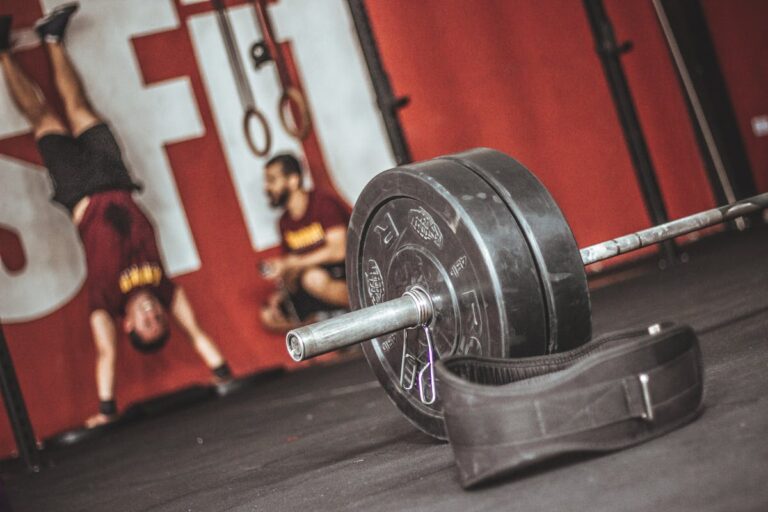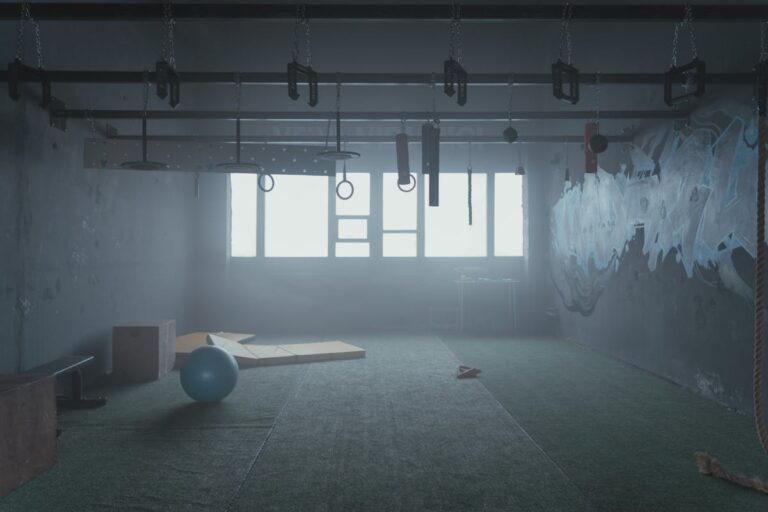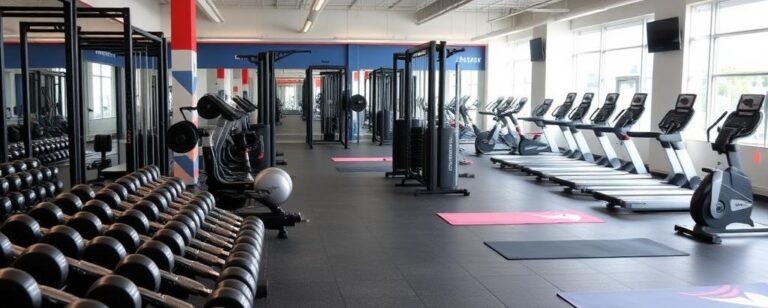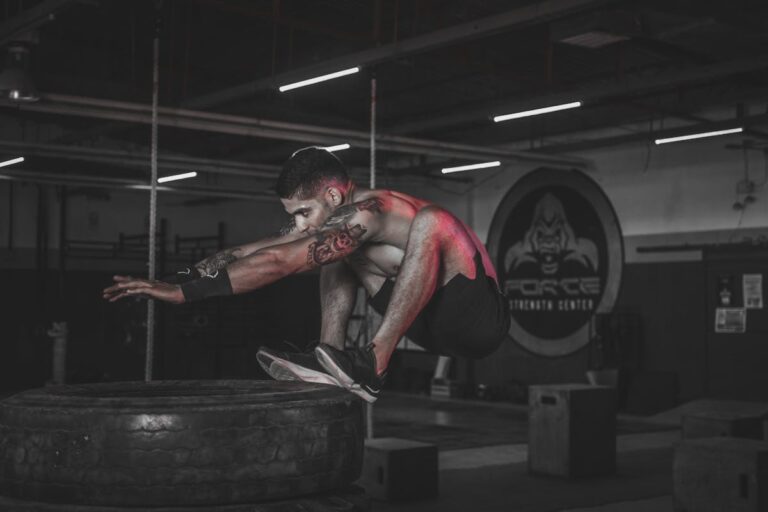10 Best Indoor Plants for Your Home Gym Wall
10 Best Indoor Plants for Your Home Gym Wall
Discover the 10 best indoor plants for home gym walls. Learn how to make a small home gym, choose home gym equipment, and create a DIY home gym on a budget.
Table of Contents
Choosing the Right Indoor Plants for Low Light Conditions 10 Best Indoor Plants for Your Home Gym Wall
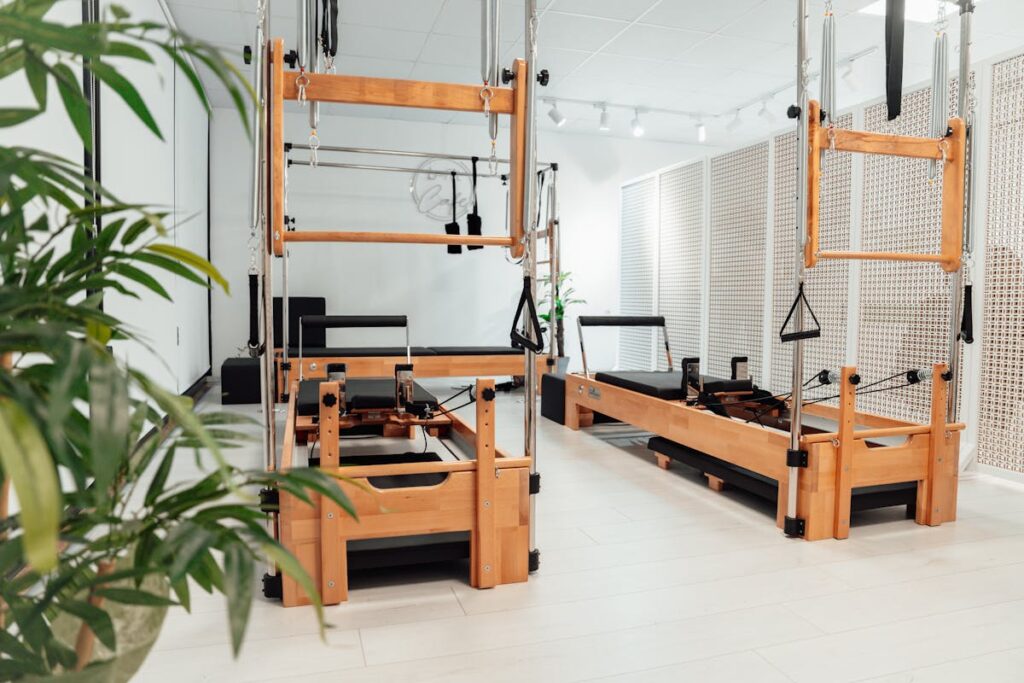
Choosing the right indoor plants for low light conditions ensures they thrive in spaces with minimal natural light. Several plants are well-suited for such environments due to their hardiness and minimal light requirements.
Factors to Consider
When selecting plants for low light conditions, consider the following factors:
- Light Requirements: Some plants naturally require less sunlight.
- Maintenance: Opt for low-maintenance plants to ensure longevity.
- Size: Choose plants that fit the available space.
- Humidity and Temperature: Ensure that plants can adapt to the typical indoor climate.
Top Plant Choices
Here are some excellent plant options for low light conditions:
- Snake Plant (Sansevieria)
- Tolerates low light.
- Requires minimal watering.
- Helps improve indoor air quality.
- ZZ Plant (Zamioculcas zamiifolia)
- Thrives in low light.
- Very drought-resistant.
- Attractive, glossy leaves.
- Pothos (Epipremnum aureum)
- Grows well in low light.
- Excellent for hanging planters.
- Purifies air by removing toxins.
- Philodendron
- Adaptable to low light.
- Various species and sizes available.
- Easy to care for.
- Spider Plant (Chlorophytum comosum)
- Tolerates low light and inconsistent watering.
- Excellent for hanging baskets.
- Produces small offsets or “spiderettes.”
Placement Tips
Optimal placement of low light plants increases their survival and growth:
- Away from Direct Sunlight: Place plants away from windows with direct sun exposure.
- Near Artificial Light: Position plants near artificial light sources like LED or fluorescent lights.
- Rotating Plants: Rotate plants periodically to ensure even light distribution.
Care Instructions
Proper care helps maintain healthy plants in low light conditions:
- Watering: Limit watering frequency; overwatering can lead to root rot.
- Humidity: Regular misting or a nearby humidifier can help maintain humidity levels.
- Fertilizing: Use a balanced, water-soluble fertilizer sparingly.
Benefits of Low Light Plants
Low light indoor plants offer several advantages:
- Aesthetic Appeal: Enhance home gym walls with greenery.
- Air Purification: Improve air quality by reducing toxins and increasing oxygen levels.
- Stress Reduction: Provide a calming ambiance, potentially enhancing workout experiences.
Choosing the right plants for low light conditions can transform a home gym wall into a lush, inviting space while ensuring the plants’ health and longevity.
Best Low-Maintenance Plants for a Workout Space
Choosing the right plants for a workout space can significantly enhance the environment without requiring rigorous upkeep. Below are top recommendations for low-maintenance plants suited for home gym walls.
- Snake Plant (Sansevieria)
- Light: Thrives in low light but can tolerate bright, indirect light.
- Water: Requires minimal watering, about once every two weeks.
- Benefits: Excellent air purifier, removing toxins such as formaldehyde and benzene.
- ZZ Plant (Zamioculcas zamiifolia)
- Light: Prefers low to moderate indirect light.
- Water: Water every three to four weeks, allowing soil to dry out between waterings.
- Benefits: Hardy and drought-resistant, with air-purifying qualities.
- Pothos (Epipremnum aureum)
- Light: Can survive in low light but grows better in bright, indirect light.
- Water: Should be watered every one to two weeks.
- Benefits: Great for air purification and easy to propagate.
- Spider Plant (Chlorophytum comosum)
- Light: Prefers moderate indirect sunlight.
- Water: Water weekly, allowing soil to dry out between waterings.
- Benefits: Efficient at filtering out carbon monoxide, formaldehyde, and other pollutants.
- Aloe Vera
- Light: Needs bright, indirect sunlight.
- Water: Water every three weeks and reduce in winter.
- Benefits: Not only purifies air but also has medicinal properties; gel can soothe minor burns and skin irritations.
- Peace Lily (Spathiphyllum)
- Light: Suited for low light conditions.
- Water: Keep soil moist but avoid waterlogging; water about once a week.
- Benefits: Effective at improving indoor air quality by removing mold spores.
- Rubber Plant (Ficus elastica)
- Light: Prefers bright, indirect light.
- Water: Water every one to two weeks; keep soil moist.
- Benefits: Increases humidity, which can be beneficial for respiratory health.
- Dracaena
- Light: Grows well in low to bright indirect light.
- Water: Water every two to three weeks.
- Benefits: Known to remove formaldehyde, benzene, trichloroethylene, and carbon dioxide from the air.
- Chinese Evergreen (Aglaonema)
- Light: Thrives in low to moderate light.
- Water: Requires watering every two to three weeks.
- Benefits: Helps to improve air quality by removing toxins.
- Philodendron
- Light: Best in medium indirect light but can tolerate low light.
- Water: Water every one to two weeks.
- Benefits: Easy to care for and effectively removes indoor pollutants.
Incorporating any of these plants into a home gym wall setup can offer substantial benefits with minimal maintenance.
Air-Purifying Plants to Enhance Your Workout Environment
Incorporating air-purifying plants into a home gym setup can significantly improve air quality, reducing pollutants and creating a healthier workout atmosphere. These plants help filter indoor air, making each breath cleaner and more refreshing. Here are some prime choices for enhancing the workout environment:
- Snake Plant (Sansevieria trifasciata):
- Also known as mother-in-law’s tongue.
- Efficient at removing toxins such as formaldehyde and benzene.
- Hardy and requires minimal maintenance.
- Spider Plant (Chlorophytum comosum):
- Highly effective in absorbing carbon monoxide and xylene.
- Produces oxygen and improves humidity levels indoors.
- Easy to care for and durable.
- Peace Lily (Spathiphyllum):
- Known for its striking appearance and air-purifying capabilities.
- Eliminates mold spores from the air, making it ideal for humid environments.
- Prefers shaded locations and needs regular watering.
- Aloe Vera:
- Excels at removing formaldehyde and benzene.
- Requires bright but indirect light.
- Easy-to-care-for, also serves as a handy remedy for minor cuts and burns.
- Bamboo Palm (Chamaedorea seifrizii):
- Great for filtering benzene, formaldehyde, and trichloroethylene.
- Adds a lush, tropical ambiance to the gym.
- Prefers indirect light and can thrive with consistent watering.
- Boston Fern (Nephrolepis exaltata):
- Effective at removing airborne formaldehyde and xylene.
- Prefers humid environments, suitable for environments prone to sweating.
- Needs indirect light and regular watering.
- English Ivy (Hedera helix):
- Known for reducing airborne mold and fecal-matter particles.
- Perfect for hanging baskets or wall mounts.
- Needs moderate light and can tolerate a range of watering conditions.
- Rubber Plant (Ficus elastica):
- Effective at removing formaldehyde from indoor air.
- Adds an element of sophistication with its broad, glossy leaves.
- Requires bright, indirect sunlight and occasional watering.
- Dracaena (Dracaena spp.):
- Removes several types of toxins including benzene, formaldehyde, and xylene.
- Available in various species and sizes, adding diversity to the gym room.
- Prefers low light and requires moderate watering.
- Golden Pothos (Epipremnum aureum):
- Known for its ability to purify the air from pollutants such as formaldehyde and xylene.
- Extremely low maintenance.
- Thrives in low light conditions.
These air-purifying plants contribute to making a home gym environment cleaner and more enjoyable, helping enthusiasts maximize their workout potential while ensuring healthier breathing air.
Aesthetic Appeal: How to Decorate Your Gym with Indoor Plants
Decorating a gym with indoor plants enhances the ambiance, creating a refreshing and pleasant environment. Wondering how to blend aesthetics with functionality in your fitness space? Here are several focal points to consider:
Selecting the Right Plants
Choosing plants that not only thrive indoors but also suit the gym environment is key. Consider the following:
- Low-Maintenance Options: Opt for plants like pothos, snake plant, and ZZ plant which require minimal care.
- Air-Purifying Varieties: Peace lilies and spider plants can help in purifying the air, promoting a healthier workout area.
- Size Variations: Mix and match small potted plants and larger statement pieces such as a fiddle leaf fig to add depth.
Strategic Placement
Placement is crucial in ensuring plants enhance the gym’s aesthetic without obstructing workout routines:
- Corner Spaces: Utilize corners for larger plants to frame the gym area aesthetically, like a tall dracaena.
- Shelving Units: Arrange smaller plants on shelves or wall-mounted planters to keep floor space clear.
- Hanging Planters: Employ hanging planters for vining plants such as pothos to add greenery without taking up surface space.
Complementing Existing Decor
Harmonize your plant selection with your existing gym decor:
- Color Palette: Choose pots and plants that complement your gym’s color scheme. Neutral-colored pots can provide a modern look.
- Material and Texture: Integrate natural textures like ceramic pots or woven baskets to add warmth and contrast.
Enhancing Mood and Energy
Plants can significantly impact the psychological atmosphere of your gym:
- Workouts: Greenery can boost mood and reduce stress, making workouts more enjoyable.
- Recovery Area: Create a tranquil recovery corner with soothing plants like lavender or jasmine which may help in relaxation.
Maintenance Tips
Keeping your indoor plants healthy is crucial for sustaining their aesthetic appeal:
- Light Requirements: Ensure plants receive adequate light according to their needs. Supplement natural light with grow lights if necessary.
- Watering Schedule: Regularly water the plants while being cautious of overwatering which can lead to root rot.
- Pruning and Cleaning: Prune dead leaves and keep the plants clean from dust to maintain their vibrancy.
Incorporating Plants for Improved Mental Health and Focus
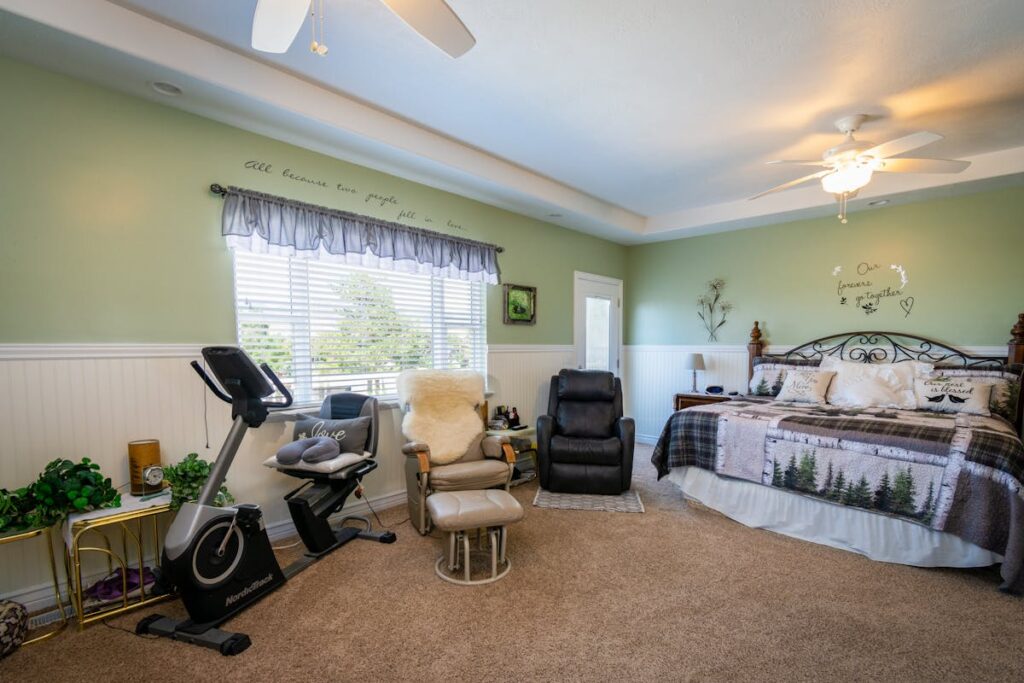
Indoor plants offer a host of benefits, particularly for mental health and cognitive function. Placing greenery within a home gym setting can prove advantageous for those seeking to enhance their workouts, mental clarity, and overall mood.
Benefits of Indoor Plants
- Stress Reduction:
- Research indicates that interaction with plants can lower cortisol levels.
- Viewing greenery has been found to promote relaxation and reduce anxiety in various studies.
- Enhanced Focus:
- Studies have shown that the presence of plants can lead to improved concentration and cognitive function.
- The restorative effect of being around plants may aid in better focus and mental acuity during workouts.
- Air Quality Improvement:
- Many indoor plants help filter out toxins and provide cleaner air.
- Better air quality contributes to enhanced physical and mental health, thereby supporting better workout performance.
Specific Plants for Mental Health Enhancement
- Snake Plant (Sansevieria trifasciata):
- Known for its air-purifying qualities.
- Easy to maintain, making it a great option for beginners.
- Peace Lily (Spathiphyllum):
- Helps remove pollutants such as formaldehyde and benzene.
- Its calming presence enhances the tranquility of the gym environment.
- Lavender (Lavandula):
- Emits a soothing fragrance known to reduce stress.
- Can improve mood and promote a sense of calm.
- Bamboo Palm (Chamaedorea seifrizii):
- Effective in filtering out harmful impurities from the air.
- Adds a tropical aesthetic that can create a refreshing ambiance.
Designing Your Green Space
- Placement Strategy:
- Integrate plants at eye level to maximize visual engagement.
- Use hanging baskets or wall-mounted planters to save floor space.
- Light and Care Requirements:
- Ensure each plant’s light and watering needs align with the gym’s environment.
- Choose low-maintenance plants for easier care.
- Combining Decor:
- Match planters with the gym decor to create a harmonious look.
- Use varying plant heights and types for a dynamic and visually appealing setup.
Mind-Body Connection
Plants enhance not only the aesthetic value but also the mental state of individuals. Incorporating plants in a gym helps build a serene and motivating atmosphere, encouraging more effective and enjoyable workouts. This connection between greenery and improved mental function promotes a holistic health approach.
Optimal Placement of Plants in Different Gym Setups
The placement of indoor plants within a home gym can dramatically affect the ambiance, airflow, and overall mood. Here are some optimal placements for various gym setups:
Wall-Mounted Shelves
Placing plants on wall-mounted shelves can save valuable floor space, particularly in smaller gyms.
- Small Succulents: Ideal for low-maintenance and minimal watering.
- Trailing Plants: Such as pothos, can add a dynamic touch as they hang down.
Window Ledges
Utilizing natural light can enhance plant growth and gym ambiance.
- Bright Corners: Aloe Vera thrives under direct sunlight.
- Shadier Spots: Snake plants can prosper with indirect light.
Corners and Nooks
Certain plants can fill awkward spaces while adding a fresh look.
- Tall, Upright Plants: Bamboo or Dracaena can make efficient use of narrow corners. Tip: Ensure pots have good drainage to avoid water spills during workouts.
Centerpieces
Making plants a focal point can break the monotony of equipment-heavy spaces.
- Large Pots: Use fiddle leaf figs for an eye-catching effect.
- Multiple Small Pots: Groupings of different small plants can create an interesting tableau.
Hanging Plants
Ceiling hooks or hanging pots can introduce greenery without reducing floor space.
- Macrame Hangers: Ideal for aesthetic appeal with spider plants.
- Bathroom-safe Hanging Plants: Ferns can thrive in humid conditions.
Between Equipment
Strategically placing plants between machines can provide small screens and increase privacy.
- Sturdy Plants: Rubber plants can withstand minor bumps.
- Compact Options: ZZ plants fit well in tighter areas without sprawling.
Closets and Storage Areas
Plants can also spruce up often overlooked spaces.
- Low-light Plants: Peace lilies can survive with minimal light.
- Air Purifying Plants: English ivy to freshen up confined spaces.
Freestanding Units
For larger gyms, incorporating freestanding plant units can add a mobile and flexible touch.
- Wheeled Planters: Easy to move as per requirement.
- Plant Stands: Adjustable height stands can accommodate various plant types.
Selecting appropriate plants and realizing their placement can not only improve gym aesthetics but also boost plant health and gym functionality. Understanding gym layout and light availability is crucial for thriving indoor greenery.
Caring for Your Gym Plants: Watering, Light, and Soil Needs
For those curating a lively home gym environment with indoor plants, understanding each plant’s watering, light, and soil needs is essential to their thriving. Here’s a guide to help manage these needs efficiently.
Watering
Proper watering routines are crucial for plant health. Over-watering can harm plants, while under-watering can leave them dry.
- Snake Plant: Requires minimal watering. Water once every 2-3 weeks, allowing the soil to dry out between watering.
- Spider Plant: Likes moist soil but not soggy. Water every 1-2 weeks, adjusting based on room humidity.
- Pothos: Prefers the soil to be kept slightly damp. Water every week but reduce in winter.
- Rubber Plant: Water when the top inch of soil feels dry. Typically, this means once a week.
- ZZ Plant: Needs less water. Water once a month, ensuring the soil is dry.
- Peace Lily: Keep soil moist with weekly watering. Increase if leaves start to droop.
- Fiddle Leaf Fig: Water when the top soil feels dry, usually once a week.
- Boston Fern: Needs constant moisture. Mist frequently and water weekly.
- Aloe Vera: Very drought-tolerant. Water deeply but infrequently, around once every 3 weeks.
- Philodendron: Keep soil lightly moist. Water every 1-2 weeks.
Light
Light is another critical factor. Each plant has specific light requirements, so ensure the gym location provides the necessary exposure:
- Snake Plant: Thrives in low to bright light.
- Spider Plant: Prefers bright, indirect light.
- Pothos: Versatile with both low and indirect light.
- Rubber Plant: Needs bright, indirect light.
- ZZ Plant: Can tolerate low light but prefers medium to bright.
- Peace Lily: Optimal with indirect, low to bright light.
- Fiddle Leaf Fig: Requires bright, filtered light.
- Boston Fern: Enjoys indirect light and high humidity.
- Aloe Vera: Needs bright, indirect to direct sunlight.
- Philodendron: Grows well in low to bright, indirect light.
Soil
Soil quality supports plant health. Different plants need various soil types for optimal growth.
- Snake Plant: Appreciates well-draining cactus or succulent soil mix.
- Spider Plant: Best in general potting soil with good drainage.
- Pothos: Performs well in all-purpose potting mix.
- Rubber Plant: Prefers a mix of potting soil, pine bark, and perlite.
- ZZ Plant: Needs well-draining soil, suited to cactus mix.
- Peace Lily: Enjoys rich, well-draining potting soil.
- Fiddle Leaf Fig: Requires well-draining potting soil with peat.
- Boston Fern: Prefers organic, loamy soil.
- Aloe Vera: Thrives in sandy, cactus potting mix.
- Philodendron: Favors well-draining potting soil mixed with peat moss.
Plants to Avoid in Your Home Gym: Toxicity and Allergen Considerations
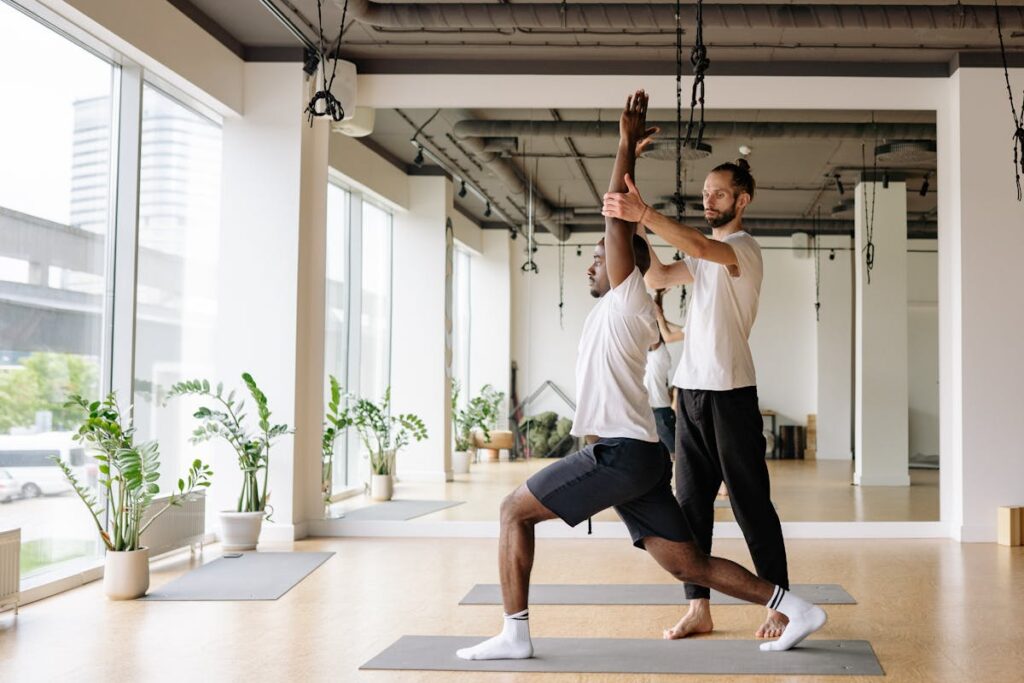
When selecting plants for a home gym, it’s crucial to be aware of certain species that could pose health risks due to their toxicity or potential to trigger allergies. Here are a few key plants to avoid:
- Dieffenbachia (Dumb Cane)
- Toxicity: Contains calcium oxalate crystals which can cause severe irritation and swelling if ingested.
- Allergens: Sap can provoke skin irritation and allergic reactions.
- Philodendron
- Toxicity: Highly toxic to pets and humans when ingested due to calcium oxalate crystals.
- Allergens: Can cause skin irritation on contact.
- Peace Lily (Spathiphyllum)
- Toxicity: Contains saponins that are harmful if ingested, causing stomach upset and more severe reactions in pets.
- Allergens: Releases pollen that can trigger allergies.
- Oleander
- Toxicity: All parts are highly toxic; inhaling the dust or ingesting any part can be fatal.
- Allergens: Can cause skin reactions and respiratory issues.
- Asparagus Fern
- Toxicity: Berries are toxic to pets and humans, causing gastrointestinal issues.
- Allergens: Sap can cause skin irritation and severe contact dermatitis.
- Ficus (Weeping Fig)
- Toxicity: Can cause skin irritation due to sap.
- Allergens: Known to provoke respiratory issues and skin reactions in sensitive individuals.
- Jade Plant (Crassula Ovata)
- Toxicity: Mildly toxic to pets, causing vomiting or slowed heart rate.
- Allergens: Minimal risk, but still a concern for sensitive individuals.
- Zamioculcas Zamiifolia (ZZ Plant)
- Toxicity: All parts contain calcium oxalate crystals, hazardous if ingested.
- Allergens: Sap can cause contact dermatitis.
- Pothos (Epipremnum Aureum)
- Toxicity: Contains insoluble calcium oxalates that can induce severe irritation upon ingestion.
- Allergens: Can irritate skin upon contact.
- English Ivy (Hedera Helix)
- Toxicity: Both berries and leaves are toxic to humans and animals.
- Allergens: Pollen and sap can cause allergic reactions, including dermatitis and respiratory issues.
When creating a healthy and safe environment in a home gym, it is essential to avoid these plants to reduce risks associated with toxicity and allergens. By opting for non-toxic, low-allergen alternatives, individuals can ensure a safer workout space for everyone.
Combining Plants with Gym Equipment for Maximum Benefit
Incorporating plants into a home gym setting offers a range of benefits that can enhance both the ambiance and functionality of the space. When added thoughtfully, plants can complement the use of gym equipment and improve the overall workout experience. Here are ways to merge plants with gym equipment for maximum benefit:
Improved Air Quality
- Air-Purifying Plants: Incorporating plants like spider plants, peace lilies, or snake plants can increase oxygen levels and remove toxins from the air. This leads to better breathing during workouts, which can improve performance.
- Humidity Regulation: Plants such as Boston ferns and areca palms release moisture into the air, helping to sustain a comfortable humidity level. Proper humidity levels can reduce the dryness associated with frequent gym use and enhance breathing comfort.
Enhanced Aesthetics and Mood
- Visual Appeal: Arranging plants around gym equipment creates a visually pleasing environment. Plants like pothos and philodendrons can be placed on shelves or hanging baskets.
- Mood Boosting: The presence of greenery has been proven to reduce stress and uplift mood. This can translate to increased motivation and energy during workouts.
Space Optimization
- Vertical Gardens: Space can often be limited in home gyms. Utilizing vertical garden systems or wall-mounted planters maximizes the use of available space and keeps the area organized.
- Corner Arrangements: Small potted plants can fit neatly into room corners, ensuring that the central area, where gym equipment is used, remains obstruction-free.
Functional Benefits
- Noise Reduction: Larger plants like rubber plants or monstera can absorb sound, reducing noise levels in the gym. This is particularly useful for those using heavy equipment or listening to music at high volumes.
- Natural Dividers: Plants can serve as natural dividers between different workout zones, helping to create a more structured and efficient exercise space.
Care and Maintenance
- Low-Maintenance Options: To avoid dedicating too much time to plant care, choose low-maintenance plants such as succulents or ZZ plants that thrive with minimal attention.
- Automated Watering Systems: Consider using automated watering systems for plants that require consistent moisture. This helps maintain plant health without disrupting the workout schedule.
By thoughtfully incorporating indoor plants with gym equipment, one can create a harmonious environment that boosts both physical and mental well-being, making each workout session more enjoyable and effective.
Real-Life Examples: Inspiring Home Gym Transformations with Plants
Example #1: Urban Oasis in a Studio Apartment
John, a fitness enthusiast living in a bustling city, revamped his small studio apartment into a multifunctional space. He incorporated plants like snake plants and spider plants on the walls of his home gym area. These plants not only added a touch of greenery but also helped purify the air, making his workouts more refreshing. He used wall-mounted planters to optimize space and create a vertical garden effect.
Example #2: Zen Retreat in a Suburban Basement
Sarah transformed her basement into a serene fitness retreat. She utilized ferns and bamboo palms, placing them in staggered wall planters and hanging baskets. This strategy maximized floor space and fostered a calming atmosphere. The combination of lush greenery and soft lighting turned her basement gym into a tranquil escape, encouraging regular meditation and yoga sessions.
Example #3: Functional and Fresh in a Family Home
The Thompson family wanted a home gym that catered to their active lifestyle without compromising on aesthetics. They installed a living wall featuring pothos and philodendrons, adding a vibrant touch to their workout space. The easy-care nature of these plants made it simple to maintain, ensuring a lively and energetic environment for the entire family.
Example #4: Modern Elegance in a Loft Space
Alex, a young professional with a loft apartment, needed a stylish yet functional workout area. He chose sleek, modern planters filled with ZZ plants and rubber plants. These low-maintenance options provided a sophisticated look that seamlessly blended with the industrial style of his loft. Additionally, these plants thrived in low light, making them ideal for an indoor gym setting.
Example #5: Green Embrace in a Tiny House
Living in a tiny house didn’t stop Emily from creating an inviting home gym corner. She used hanging ivy and succulent wall frames to introduce greenery without taking up valuable floor space. These clever design choices enhanced the aesthetic appeal while offering mental and physical health benefits. The greenery helped her stay motivated and energized during workouts.
Example #6: Nature’s Touch in a Modern Condo
David added a touch of nature to his modern condo gym by installing air plants and orchids along an accent wall. The unique and delicate appearance of these plants added a touch of elegance, creating a visually engaging space. The air plants thrived on minimal care, making them an excellent choice for his busy lifestyle.
Example #7: Energizing Ambiance in a Garden Shed Gym
Mary turned her garden shed into a vibrant home gym by embracing a botanical theme. She adorned the walls with English ivy and peace lilies. These plants added a refreshing feel and helped filter out toxins from the air, cultivating an invigorating environment. Her outdoor-indoor gym blend brought an exciting twist to her fitness routine.
Conclusion: Boosting Your Fitness Routine with the Power of Nature
Introducing indoor plants to a home gym can lead to multiple benefits that enhance both physical performance and mental well-being. These benefits can profoundly impact the overall fitness routine, creating an enriched and more motivating environment.
Benefits of Indoor Plants in a Home Gym
- Improved Air Quality
- Plants like the Spider Plant and Snake Plant are known for their air-purifying qualities.
- Cleaner air enhances respiration, which is crucial during intense workouts.
- Enhanced Mood and Reduced Stress
- The presence of greenery has been proven to reduce stress and improve mood.
- Calming plants like the Lavender can help maintain a positive mindset during workouts.
- Increased Motivation and Energy
- Plants such as Aloe Vera are associated with increased overall vitality.
- Having such plants around can boost motivation and stamina.
Top Indoor Plants for Fitness Enthusiasts
- Golden Pothos: Known for its low maintenance, it adds a refreshing touch to any space and purifies the air.
- Peace Lily: Helps reduce mold spores in the air, promoting a healthier environment.
- English Ivy: Excellent at removing toxins from the air, contributing to overall well-being.
- Rubber Tree: Offers robust growth and contributes to cleaner air, helping maintain a breathable atmosphere.
- Bamboo Palm: Adds a tropical vibe while also being a powerful air purifier.
Placement Tips for Maximum Effect
- Near Equipment: Place Aloe Vera or Snake Plant near treadmills or weights to ensure cleaner air.
- Corners and Shelves: Use hanging plants like Golden Pothos to save space and add a vertical element.
- Window Sills: Utilize natural light for plants like English Ivy or Spider Plant to thrive, enhancing the gym’s aesthetic appeal.
Additional Considerations
- Artificial vs. Natural Light: Be mindful of each plant’s lighting needs to ensure they thrive.
- Maintenance: Choose low-maintenance plants if frequent care is not ideal, making sure the fitness environment remains low-stress.
- Ambiance Creation: Mix various plant types to create a balanced vibe that promotes both relaxation and energy.
By integrating these indoor plants into the home gym, one can significantly enhance the fitness routine’s overall ambiance and effectiveness. Integrating natural elements creates a beneficial synergy between nature’s calming influence and the invigorating atmosphere necessary for an effective workout space.
